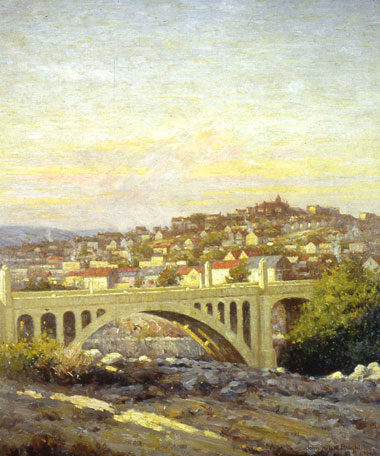 |
 |
 Harrison Avenue Bridge by John Willard Raught American, 1857 - 1931 oil on canvas, 1927 Gift of A.P. Lucas, N.A., Cullen Yates, N.A., Corwin K. Linson, Emile Strange, and O.H.C. Wingard, 0.10 Lent to the Clinton White House 1993 - 1997 Born in 1857, Raught was a native of Dunmore, Pennsylvania. At the age of 24, he enrolled in the Academy of Design in New York City. He then went on to study abroad at the Julien School in Paris, remaining in Europe for seven years. Upon his return to the United States, he opened a studio in New York for several years before returning to live in Dunmore. He primarily painted landscapes of Scranton and the local area, and the Everhart Museum has the largest public collection of Raughtís work. Raughtís work demonstrates a turning point in American art from realistic painting to impressionistic techniques, inspired by the artists in Paris. His famous paintings of the regionís coal breakers marked a change from natural scenes to industrial ones. Raught was a member of the Salmagundi Art Club in New York City, a prestigious organization that included such members as N.C. Wyeth, Charles Dana Gibson, Childe Hassam, Howard Pyle, and William Merrit Chase. The Harrison Avenue Bridge was designed by Abraham Burton Cohen and constructed in 1922 by Chief Engineer William Schunk of the Anthracite Bridge Co. It was built to accommodate a streetcar track, which was never installed. |











